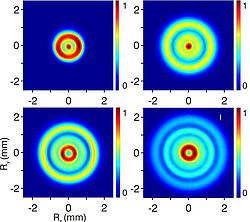Apart from the hydrogen atom, which consists of only one proton and one electron, the helium atom is the simplest atom of our world. The helium atom consists of a doubly charged nucleus and two orbiting electrons. The existence of two electrons leads to a new point of view with far-reaching consequences, namely the concept of electron correlation. In the journal Physical Review Letters [1] the experimental observation of the controlled emergence of electron correlation in helium atoms is reported. Photoionization of helium was studied under conditions in which the electron correlation can be arbitrarily turned on and off. For off-line correlation, helium behaves like a hydrogen atom. By contrast, for activated correlation, the dynamics of the ionization process are strongly determined by the interaction between the two electrons.
In the experiment, helium atoms were ionized by the absorption of a single photon in the ultraviolet spectral range. This was possible because the atoms were brought into a long-lived excited state by shocks with high-energy electrons in a discharge source. The energy of the exciting photon was adjusted so that it was just sufficient for the ionization of the atom. Thus, 99.9% of the photon energy was used to overcome the binding energy of the electron and only 0.1% released to the freed after ionization electron as kinetic energy. The resulting photoelectrons were thus very slow. In the experiment, they were accelerated to a two-dimensional detector where their impact locations were measured. The impact sites map the velocities of the electrons in the detector plane.
